php editor Baicao is here to introduce the concept of Layer2 and some leading projects. Layer2 refers to the second layer expansion solution on the Ethereum network, aiming to improve the transaction throughput and scalability of the Ethereum network. Layer 2 technology allows users to obtain higher transaction speeds and lower transaction fees without sacrificing security and decentralization. Currently, some leading Layer 2 projects include Optimism, Arbitrum, zkSync, etc., all of which have achieved Ethereum expansion to varying degrees. In the future, with the continuous development of Layer 2 technology, we are expected to see more innovative projects emerge, bringing more opportunities and challenges to the entire blockchain field.
Compared with the ZK Rollup solution, Optimistic Rollup is easier to implement because of its stronger portability. In addition, under the strong market demand, it also formed a first-mover advantage. In terms of lock-up volume, Optimistic Layer 2 solutions Arbitrum and Optimism have surpassed many previously well-known Layer 1 public chains, ranking fourth and sixth respectively.
Compared with the long withdrawal cycle problem of Optimistic Rollup, ZK Rollup solves this problem through mathematical reliability proof. However, because ZK Rollup is not fully compatible with EVM, its development progress is relatively slow and it has also lost its first-mover advantage to a certain extent.
4.Leading Layer 2 projects include Optimism, Arbitrum, zkSync, Polygon and StarkNet; in addition, well-known Layer 2 projects include Immutable X, Scroll, Loopring, etc.
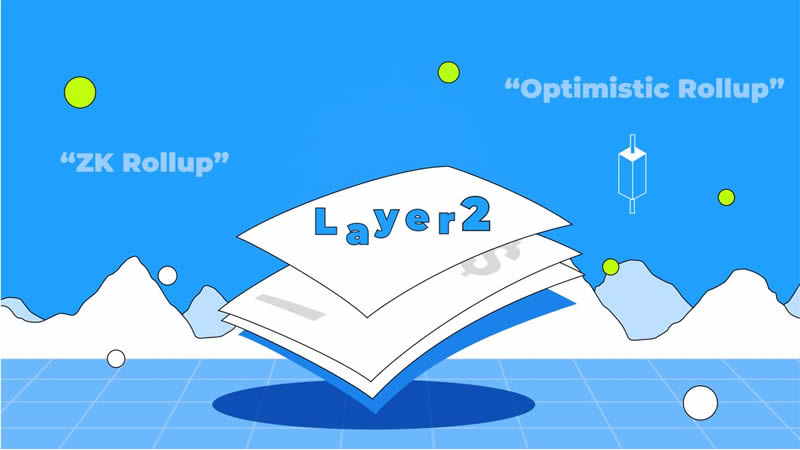
When it comes to Layer2, we need to first understand the expansion issue of Ethereum. Initially, Ethereum aimed to become a programmable blockchain platform, a world computer. However, as the amount of data increases, the Ethereum network has been experiencing congestion problems, which requires Ethereum to have high performance requirements. Therefore, capacity expansion has become the main solution to improve the performance of Ethereum and has also become the focus of market attention. The scaling technology aims to reduce the burden on the Ethereum main chain and improve overall performance by transferring some transactions to side chains or off-chain processing. This approach can increase transaction throughput, lower transaction fees, and reduce congestion issues. Layer2 solutions come in many different forms, such as state channels, sidechains, Plasma, etc. These technologies can reduce the number of transactions on the Ethereum main chain by aggregating transactions into a single transaction, thereby increasing overall efficiency. All in all, there are two expansion routes for Ethereum through the use of Layer 2: on-chain expansion and off-chain expansion. On-chain expansion mainly uses sharding technology, which is one of the core goals of ETH 2.0. However, sharding technology is very difficult to develop. Initially, Ethereum planned to use 1024 shards, but due to technical difficulties, it was decided to reduce it to 64 shards. However, even so, deploying 64 shards still takes a while. Due to the explosion of blockchain applications such as DeFi and NFT, the demand for expansion has become very urgent, so the market has turned its attention to the off-chain expansion solution - Layer 2, which is a less difficult option to implement.
In short, Layer 2 achieves expansion by establishing a new chain next to the main chain. Analogous to a building, Layer 1 is equivalent to expanding the foundation area, while Layer 2 is equivalent to adding floors to an existing building. Their common goals are to increase Ethereum’s scalability, alleviate network congestion, reduce high gas fees, and improve network efficiency. The figure below shows the comparison between Layer1 and Layer2.
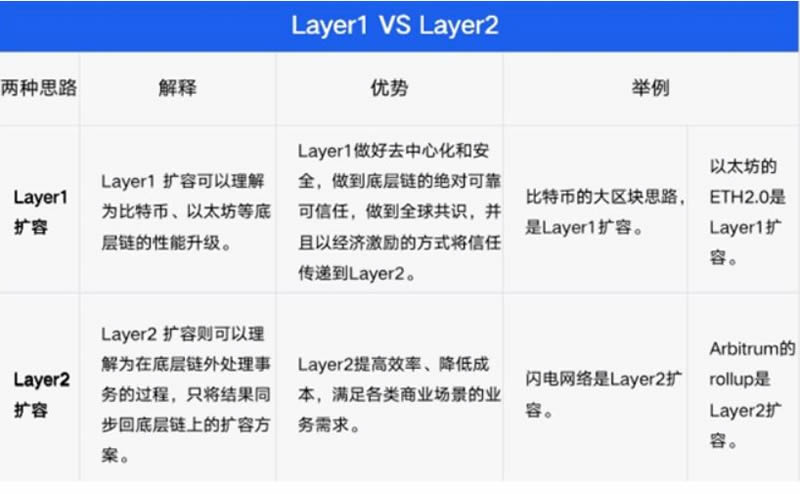 Figure 1: Comparison chart of Layer1 expansion and Layer2 expansion
Figure 1: Comparison chart of Layer1 expansion and Layer2 expansion
To further explore the technical solutions of Layer2, Ethereum Layer2 solutions can be divided into: State channels, sidechains, Plasma, Rollups, Validium, hybrid solutions, etc. The following figure shows the main differences between different technical solutions:
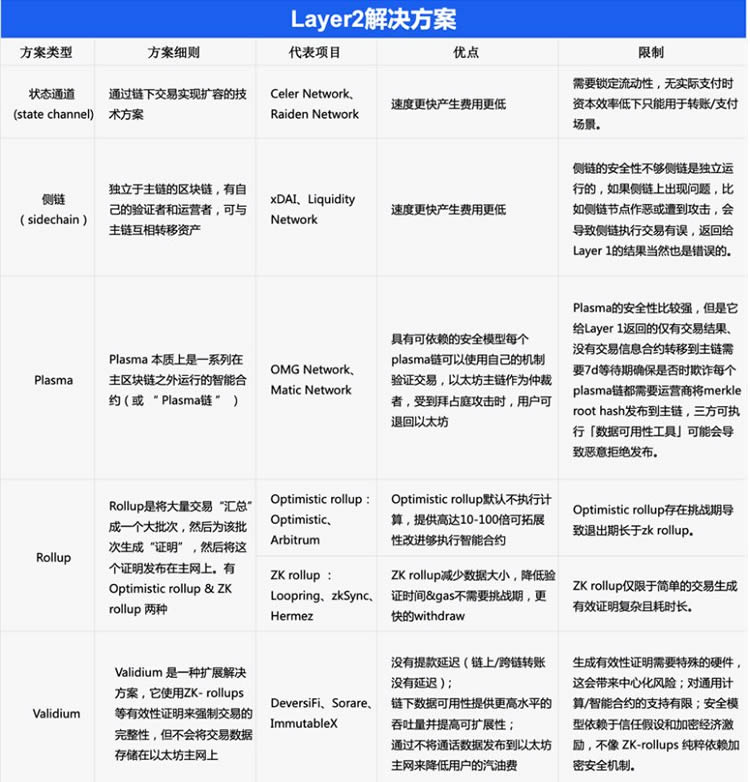 Figure 2: Comparison of Layer2 specific expansion plans
Figure 2: Comparison of Layer2 specific expansion plans
Among the many Layer2 solutions, the most popular one is currently The focus is on Rollup. Rollup means "summarizing" or "arranging" in Chinese. In the Ethereum network, due to the bandwidth limitations of the ETH network, gas fees usually rise significantly when the network transaction volume is large. The function of Rollup is to copy and send the content that Ethereum needs to calculate to the Layer 2 protocol connected outside Ethereum for calculation. Then, the calculation results are compressed, packaged and re-sent back to the on-chain network. Rollup executes transactions outside Layer1, but publishes transaction data on Layer1. Since transaction data is included in Layer 1 blocks, Rollup is equivalent to inheriting the security of Ethereum. According to different schemes for the effectiveness of compressed data (that is, data correctness), Rollup can be divided into two types: Optimistic Rollup and ZK Rollup.
Compared with the ZK Rollup solution, Optimistic Rollup is easier to implement in the short term, mainly because it has stronger portability, which further promotes its formation First mover advantage. Currently, the leading projects based on Optimistic Rollup include Optimism and Arbitrum. These two Layer 2 projects have issued tokens and have initially formed a first-mover advantage. In contrast, projects based on ZK Rollup such as zkSync are developing at a slower pace.
According to reports, on February 23, 2023, Coinbase announced the launch of the Ethereum Layer 2 network Base test network based on Optimism OP Stack; on June 19, BNB Chain announced the launch of the opBNB test network based on Optimism OP Stack . In addition, Arbitrum has also achieved great success and is supported by numerous crypto ecosystem projects. From the perspective of total locked value (TVL), Arbitrum and Optimism currently rank fourth and sixth respectively, surpassing many previously well-known Layer 1 public chain projects, such as Solana.
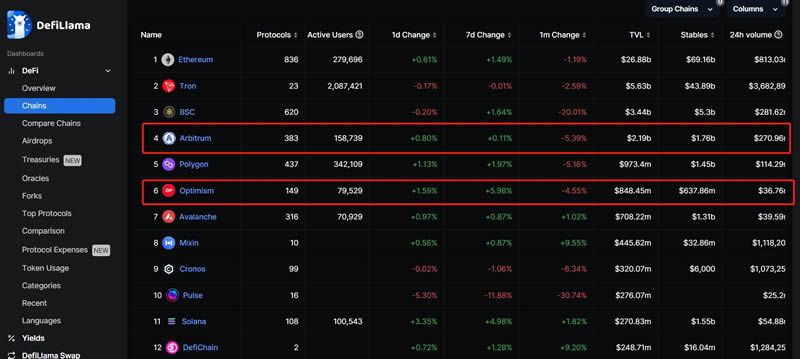
Figure 3: TVL market ranking of mainstream public chains and Layer2 (Source: defillama)
Optimistic Rollup has obvious advantages, but there is also a fatal The disadvantage is that the problem of fraud proof needs to be solved, resulting in the withdrawal cycle being as long as a week. However, Arbitrum and Optimism are working hard to solve this problem in other ways to improve overall competitiveness.
In early June, Optimism announced that they would be migrating their L2 Rollup to Bedrock. This release marks the first official launch of the OP stack, making OP mainnet the most cost-effective Ethereum L2 Rollup token swap solution. In addition, Bedrock has the following advantages: reducing deposit time from 10 minutes to 3 minutes; enhancing proof modularity by supporting proof-of-failure and ZK proofs; allowing multiple transactions to be executed within a single Rollup "block". After completing the Bedrock upgrade, Optimism’s next plan is to transition to a super chain. Hyperchain is a decentralized network composed of L2 (OP chain), sharing security, communication layer and open source technology stack (OP stack).
Arbitrum offers four core products: Arbitrum One is the first mainnet rollup of the Arbitrum ecosystem; Arbitrum Nova is an AnyTrust solution designed for projects that are cost-sensitive and have high transaction volume expectations; Arbitrum Nitro is a technology software stack that drives Arbitrum L2, making Rollup faster, cheaper, and more compatible with the Ethereum Virtual Machine (EVM); Arbitrum Orbit is a development framework that allows the creation and deployment of L3 on the Arbitrum mainnet. L3 Rollup, also known as the application chain, plays a vital role in settling transactions to the Arbitrum chain. They are the foundation for the next stage of Arbitrum's expansion journey and are the solutions to realize its vision.
Compared with Optimistic Rollup, ZK Rollup is stronger in ensuring data availability. This means that anyone can restore the overall status of the account based on the transaction data stored on the chain, thus avoiding security risks caused by data unavailability. Different from Optimistic Rollup, ZK Rollup solves the problem of long withdrawal period through mathematical reliability proof. In terms of technical security, it is almost equivalent to Layer1 (Ethereum main chain), and deposit and withdrawal operations can be carried out immediately according to user needs. This is the biggest advantage of ZK Rollup.
However, like Optimistic Rollup, ZK Rollup also has some limitations. The current ZK Rollup is not yet fully compatible with the Ethereum Virtual Machine (EVM) because it requires generating a zero-knowledge proof at the second layer and passing it back to the first layer for verification. The entire transaction process must comply with the requirements of zero-knowledge proof. However, when the EVM was originally designed, it was not considered to support zero-knowledge proofs. However, some Layer 2 projects, such as Scroll, zkSync and Polygon, have announced plans to deploy the ZK-EVM computing environment to allow ZK Rollup to run various smart contracts independently. Once ZK Rollup is fully compatible with EVM, it will have the opportunity to gain favor from more DeFi projects. As more and more DeFi projects adopt ZK Rollup technology, its development prospects will further expand.
In addition, due to the relatively slow development of the ZK Rollup ecosystem as a whole, the lack of first-mover advantage requires the need to catch up with the ever-changing crypto market. To this end, the zkSync team launched an open source framework called ZK Stack on June 26 for building custom zkRollup solutions. This framework gives developers complete autonomy to choose data availability modes and use their own decentralized sorters as needed. ZK Stack provides two key features: autonomy and seamless connectivity. These zkRollup chains can run independently, relying only on the Ethereum main chain to ensure activity and security, and interconnect the chains through cross-chain bridges to achieve trustless, fast and cheap interoperability. Market analysts believe that ZK Stack is the trump card for the zkSync team to compete with OP Stack and Arbitrum Orbit.
In addition to Optimism, Arbitrum and zkSync mentioned above, Polygon and StarkNet are also leading Layer 2 projects. In addition, well-known Layer2 projects include Immutable X, Scroll, Loopring, etc.
Polygon
Polygon uses a technology called Plasma to build a Layer2 network and supports a variety of Ethereum smart contracts. In early June, Polygon made the latest announcement about the next phase of their L2 development. Polygon 2.0 aims to create a “value layer for the Internet.” The solution is designed to improve interoperability between Polygon zkEVM, PoS and Supernet through a series of upgrades. By combining zero-knowledge technology with existing PoS mechanisms, Polygon aims to enhance security and privacy protection. In Polygon 2.0, they aim to combine the best of both technologies. A recent announcement from the Polygon team revealed their plans to convert Polygon PoS to zkEVM validium by the end of Q1 2024.
StarkNet
StarkNet is zkVM ZKR. Since it designs a new Cairo language for the virtual machine, it has certain development thresholds for native Ethereum developers. With the support of Cairo 1.0, the functionality of Starknet is now basically complete except for Regenesis. Officials say the upcoming Starknet v 0.12.0 will include significant throughput and latency improvements. This release includes the transition to Rust-based Sequencer (developed by StarkWare) and the new Rust-Cairo VM (cairo-rs, developed by LambdaClass) - two open source projects with performance benchmarks expected soon. By 2024, decentralization will become the focus of network operations and decision-making. Earlier, in order to promote the decentralization of the protocol, StarkNet officials have stated that they will release STARK Token in the future.
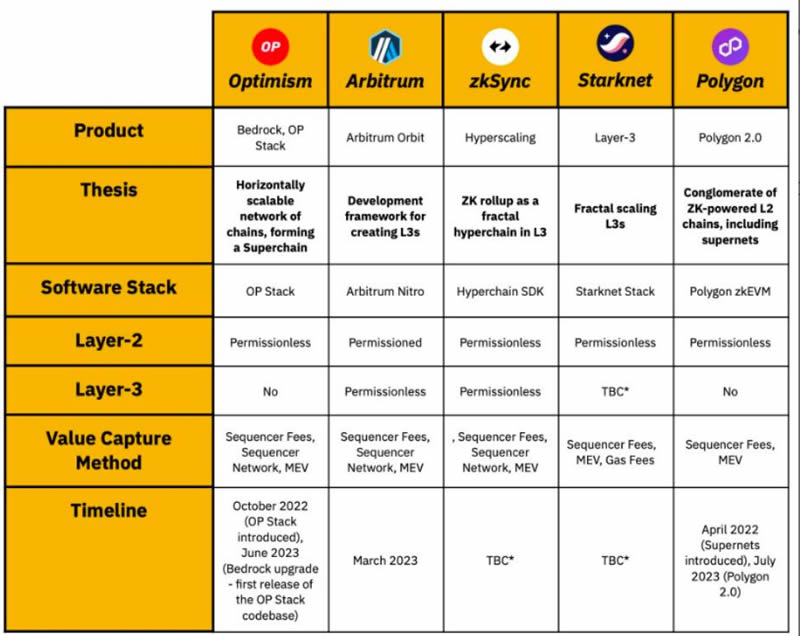
Figure 4: Comparison of different dimensions of mainstream Layer2 projects
The above is the detailed content of What is Layer2? What other leading projects are there for Layer 2?. For more information, please follow other related articles on the PHP Chinese website!




